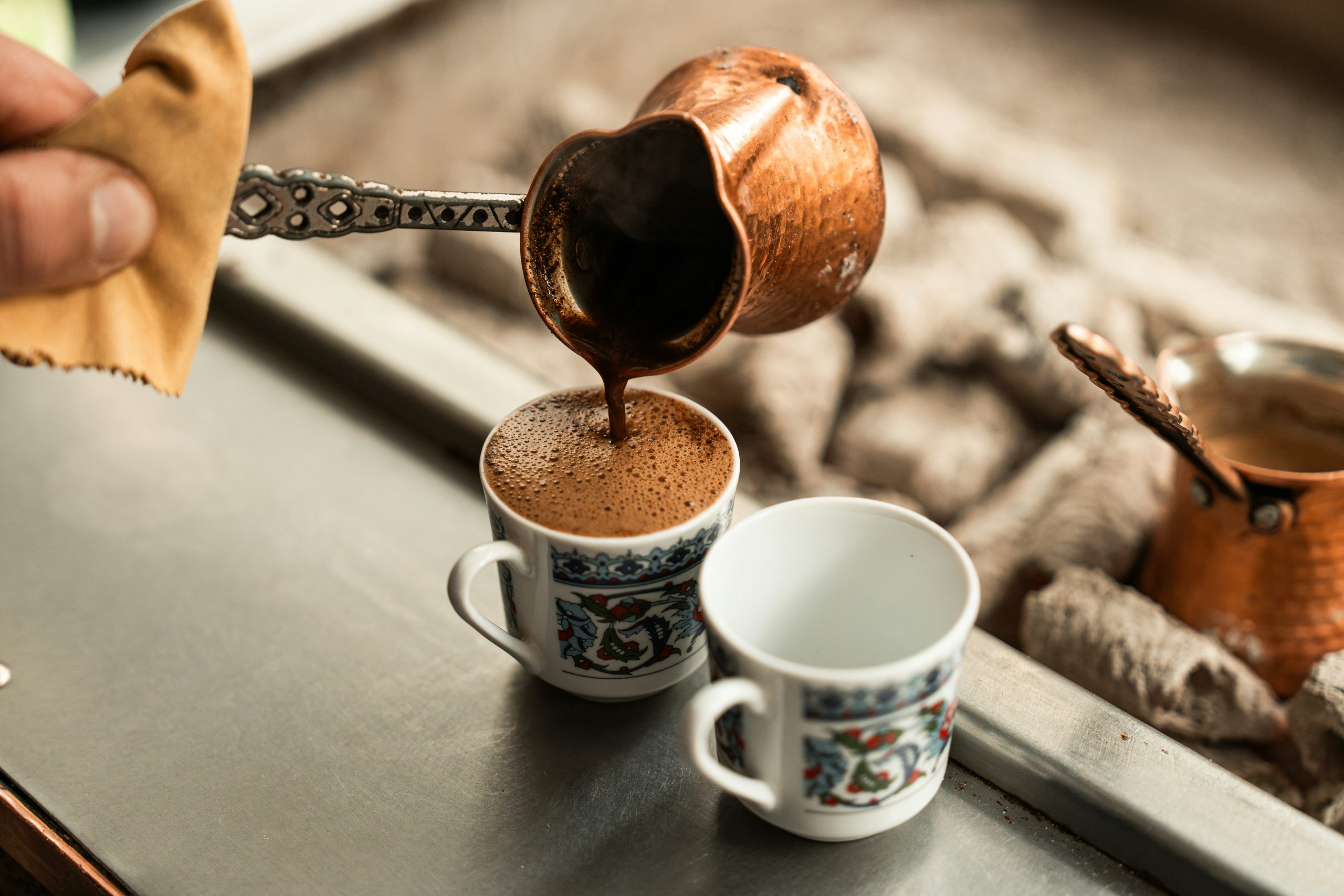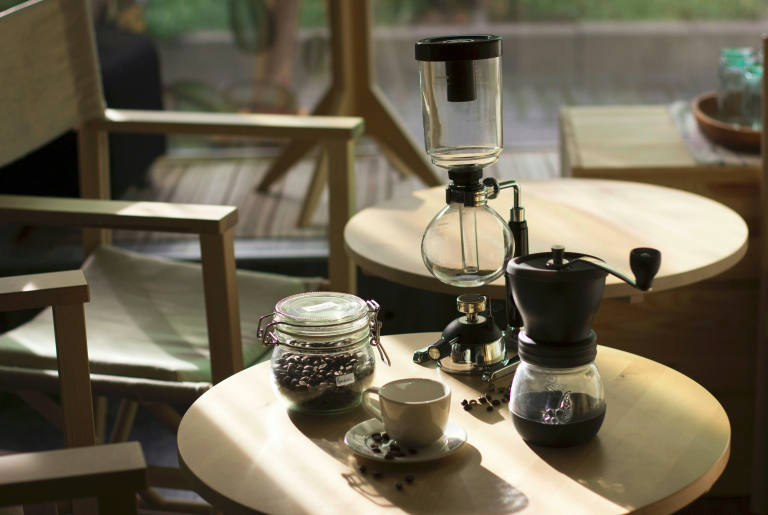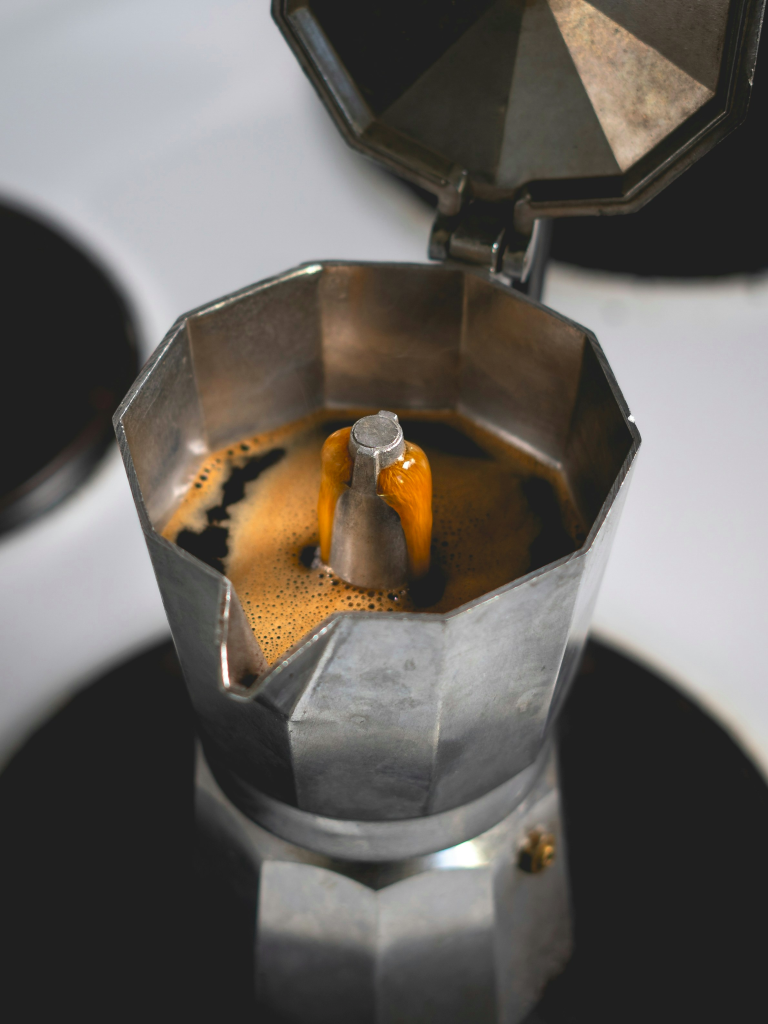Free Shipping on all U.S. orders $50+
Brew Authentic Turkish Coffee Like a Pro: The Cezve Method Explained

Coffee lovers seeking a truly immersive brewing experience need look no further than the cezve (pronounced “JEZ-veh”), also known as an ibrik. This ancient brewing method, with roots stretching back to 16th-century Ottoman Empire, creates one of the world’s most distinctive and flavorful coffee experiences. Unlike modern brewing methods that filter out coffee grounds, cezve coffee embraces them, creating a rich, full-bodied drink that’s as much about ritual as it is about taste.
What Makes Cezve Coffee Special?
Cezve coffee stands apart from other brewing methods in several key ways. The ultra-fine grind—finer than espresso—allows for maximum extraction in a short time. The brewing process involves bringing the coffee to a near-boil multiple times, creating a unique flavor profile that’s both intense and smooth. Most notably, the grounds remain in the cup, settling to the bottom to create a thick, syrupy layer that intensifies the coffee’s character.
Equipment You’ll Need
The Cezve Itself: Traditional cezves are made from copper or brass, though stainless steel versions work well too. The key features are a wide bottom that tapers to a narrow neck with a pouring spout. Sizes typically range from single-serving (2-3 oz) to family-sized (6-8 oz).
Coffee Grinder: You’ll need a grinder capable of producing an extremely fine powder—think powdered sugar consistency. A high-quality burr grinder or a traditional hand grinder works best. Blade grinders often struggle with achieving the necessary fineness.
Heat Source: A gas stove provides the best control, but electric stoves work too. Some enthusiasts prefer using sand or a specialized electric cezve heater for even more precise temperature control.
Choosing Your Coffee
The coffee you select dramatically impacts your final cup. Medium to dark roasted beans work exceptionally well, as they complement the brewing method’s intensity. Single-origin coffees from regions like Ethiopia, Yemen, or Central America offer fascinating flavor profiles when brewed this way. Avoid very light roasts, as they can taste underdeveloped with this method.
Freshness matters enormously. Grind your beans immediately before brewing, as the ultra-fine grind loses its aromatics quickly when exposed to air.
The Step-by-Step Brewing Guide
Ingredients (for one serving):
- 1 tablespoon (6-8g) ultra-finely ground coffee
- 3 oz (90ml) cold, filtered water
- Sugar to taste (optional, but traditional)
Instructions:
Step 1: Combine Ingredients Add the cold water to your cezve first, followed by the coffee grounds. If using sugar, add it now—traditionally, Turkish coffee is served sweet, but adjust to your preference. Stir everything together until well combined.
Step 2: Initial Heating Place the cezve on your heat source over low to medium-low heat. This is crucial—too much heat will ruin the coffee. The goal is a slow, gentle warming that allows the coffee to dissolve and develop flavor gradually.
Step 3: Watch for the First Rise As the coffee heats, it will begin to foam and rise up the narrow neck of the cezve. This typically takes 3-4 minutes with proper heat control. The moment you see the coffee beginning to foam vigorously, remove it from heat immediately.
Step 4: Let It Settle Allow the coffee to settle for about 30 seconds. You’ll notice the foam subsides and the coffee calms down.
Step 5: Second Rise Return the cezve to the heat source. Again, watch carefully as the coffee will foam up more quickly this time—usually within 1-2 minutes. Remove from heat as soon as you see vigorous foaming.
Step 6: Final Settlement Let the coffee settle one final time. Some brewers repeat the heating process a third time, but two cycles typically produce excellent results.
Step 7: Serve Immediately Pour the coffee into a small cup, ensuring each serving gets some of the precious foam on top. Pour slowly and steadily to distribute the grounds evenly.
Pro Tips for Perfect Cezve Coffee
Temperature Control is Everything: The most common mistake is using too high heat. Low and slow wins every time. If your coffee tastes bitter or harsh, try reducing your heat even further.
Don’t Stir During Brewing: Once you start heating, resist the urge to stir. This can break up the foam and affect the final texture.
Grind Consistency Matters: Inconsistent grinding leads to uneven extraction. If you notice your coffee tastes weak in some sips and overpowering in others, focus on achieving a more uniform grind.
Water Quality: Since water makes up most of your cup, use filtered water for the best taste. Hard water can create mineral flavors that compete with your coffee.
Timing the Pour: Pour immediately after the final heating cycle. Letting the coffee sit too long in the cezve can lead to over-extraction and bitterness.
Understanding the Foam
The foam (called “kaimaki” in Greek or “köpük” in Turkish) is considered the hallmark of properly brewed cezve coffee. This golden, thick foam forms naturally during the heating process and adds both visual appeal and textural complexity to your cup. Good foam indicates proper heat control and timing.
If you’re not getting good foam, check your grind size (it might not be fine enough), your heat level (probably too high), or your coffee-to-water ratio (you might need more coffee).
Serving and Enjoying
Cezve coffee is traditionally served in small cups alongside a glass of water and often a small sweet treat. The coffee should be sipped slowly, stopping before you reach the grounds that have settled at the bottom. These grounds aren’t meant to be consumed—they’re incredibly concentrated and gritty.
Take your time with each sip. The flavor will evolve as the coffee cools, revealing different notes and characteristics. The first sip might be intense and almost overwhelming, but subsequent sips will show more nuance and complexity.
Troubleshooting Common Issues
Bitter Coffee: Usually indicates too high heat, over-extraction, or poor-quality beans. Try reducing heat and using fresher, better-quality coffee.
Weak Coffee: Often caused by grind size that’s too coarse, insufficient coffee, or not heating long enough. Increase your coffee dose or grind finer.
No Foam: This typically results from heat that’s too high, stirring during brewing, or grind that’s too coarse.
Gritty Texture: While some sediment is normal, excessive grittiness suggests your grind might be uneven or you’re drinking too close to the bottom of the cup.
The Cultural Experience
Brewing cezve coffee isn’t just about making a drink—it’s about embracing a centuries-old tradition that emphasizes patience, attention, and respect for the coffee itself. In Turkish culture, the brewing and serving of coffee is considered an art form, and taking shortcuts or rushing the process misses the point entirely.
This method teaches valuable lessons about slow brewing that can improve your appreciation for coffee in general. The meditative quality of watching the coffee slowly heat and foam provides a welcome break from our fast-paced world.
Final Thoughts
Mastering cezve coffee takes practice, but the rewards are immense. Each cup offers a direct connection to coffee’s rich history while delivering flavors that simply can’t be achieved through other brewing methods. The intense, almost syrupy richness combined with the aromatic complexity makes every cup a special occasion.
Start with quality beans, invest in a good grinder, and most importantly, be patient with the process. Your first few attempts might not be perfect, but persistence will reward you with some of the most memorable coffee experiences you’ll ever have.
Whether you’re exploring coffee culture or simply looking for a new way to enjoy your daily cup, cezve brewing offers an adventure that engages all your senses and connects you to generations of coffee lovers who have perfected this beautiful, ancient art.



